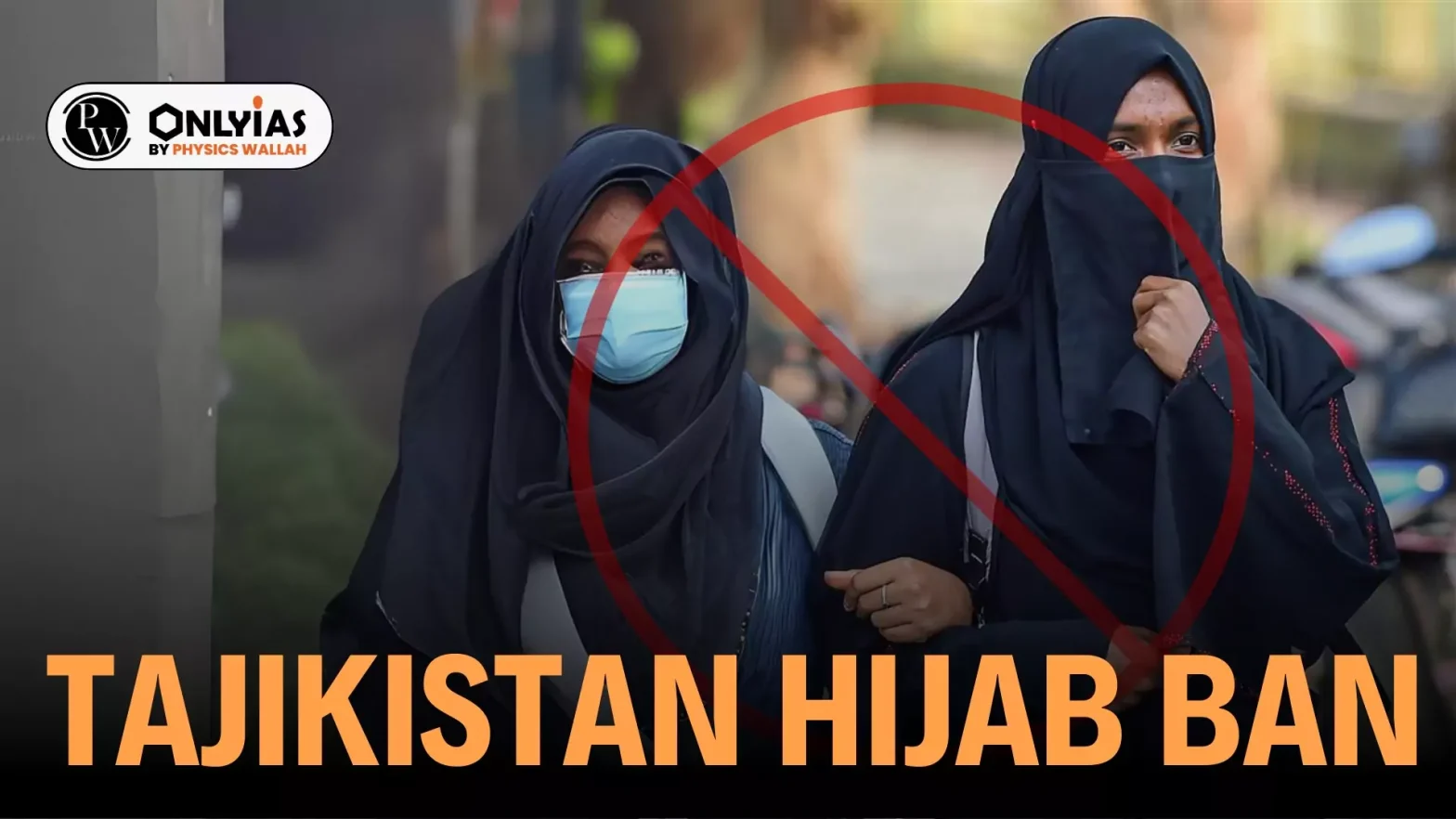Tajikistan’s President Emomali Rahmon has earlier described the hijab as “foreign clothing” and taken steps to minimise the visibility of public religiosity. It is deeply linked to his politics and grip on power.
| Relevancy for Prelims: Hijab Ban, Tajikistan Map, Eidi, Eid, Navroz, xenophobia in clothing,
Relevancy for Mains: Tajiki culture, Concept of secularism, etc. |
Tajikistan Hijab Ban, Background
The Tajikistan government has passed a bill to formally ban the wearing of the hijab.
- The bill was approved by the lower house (Majlisi Namoyandagon) and received approval from the upper house (Majlisi Milli), post-Eid celebrations.
- This move formalizes years of unofficial curbs on religious clothing.
- It aligns with President Emomali Rahmon’s views on the hijab, which he has termed as “foreign clothing”.
- Tajikistan’s population is approximately 90% Muslim.
- The ban on the hijab raises questions about the rationale behind this move in a predominantly Muslim country.
Enroll now for UPSC Online Classes
What Does the New Law Say?
- Amendment Details: The new bill amends the existing law ‘On Regulation of Holidays and Ceremonies’.
- It forbids the “import, sale, promotion, and wearing of clothing deemed foreign to the national culture”.
- Central to these changes is the ban on the hijab and other garments associated with Islam.
- Penalties for Violations: Individual offenders may face fines of 7,920 somonis ($747).
-
- Higher fines of up to 39,500 somonis ($3,724) may be imposed according to Radio Liberty’s Tajik Service.
- Additional Bans: The bill also bans Eidi, the custom of gifting money to children during Eid and Navroz.
-
- Festivities around Eid-al-Fitr and Eid-al-Adha are also prohibited.
Why is the Hijab deemed “foreign”?
- Context and Motivation: The hijab ban is part of President Rahmon’s efforts to promote “Tajiki” culture and minimize public religiosity.
- Rahmon heads a secular government and has been in power since 1994, marking one of the longest rules in the region.
- Political Background: Rahmon’s early political career saw him positioned against more religious political parties.
-
- He served as a people’s deputy in the Soviet Socialist Republic of Tajikistan.
- Post-Soviet Union collapse in 1991, Tajikistan faced a civil war between Soviet sympathizers (including Rahmon) and ethnoreligious clans of the United Tajik Opposition.
- Rise to Power: Rahmon emerged as the winner of the 1994 presidential elections after widespread protests against poverty and lack of economic opportunities.
-
- He leads the People’s Democratic Party of Tajikistan, in power since 1994.
- Over the years, Rahmon has amended the constitution to solidify his rule, including removing presidential term limits in 2016.
- He has also banned faith-based political parties that could challenge his authority.
- Religious Restrictions: Massoumeh Torfeh highlighted in Al Jazeera (2015) the increasing religious restrictions in Tajikistan.
-
- Rahmon’s concern with religious clothing stems from rising religiosity post-Soviet Union breakup, with more people engaging in Islamic practices and attire.
- Despite this, some analysts believe the threat from radical Islam is exaggerated in Central Asia.
- Islamic practices were part of local cultures even during Soviet control, contrary to the idea that Islam “revived” only after Soviet rule ended.
Similar Rules Introduced Earlier in Tajikistan
- Initial Legislation: In 2007, a law regulating holidays and ceremonies was passed. This law prohibited Islamic clothing and Western-style miniskirts.
- It led to a ban on the hijab for students and eventually in all public institutions.
- President Rahmon’s Campaign: Rahmon intensified his campaign against the hijab in 2015, calling it “a sign of poor education.”
- In 2024, he reiterated his stance, criticizing “xenophobia in clothing” and foreign clothes, including the hijab.
- Government Initiatives: In 2017, the government launched a campaign with automated phone calls urging women to wear Tajiki dresses. In 2018, a 376-page handbook titled ‘The Guidebook Of Recommended Outfits In Tajikistan’ was released.
- The guidebook details acceptable garment materials, lengths, colors, and shapes.
- It allows for a colored head-scarf tied behind the head without covering the face and neck.
- It bans black garments at funerals, recommending a blue outfit with a white headscarf instead.
Check Out Previous Years Papers From PW Store
Conclusion
The hijab ban exemplifies President Rahmon’s drive to promote “Tajiki” culture, despite the predominantly Muslim population, highlighting ongoing religious and cultural tensions in Tajikistan.
![]() 24 Jun 2024
24 Jun 2024

